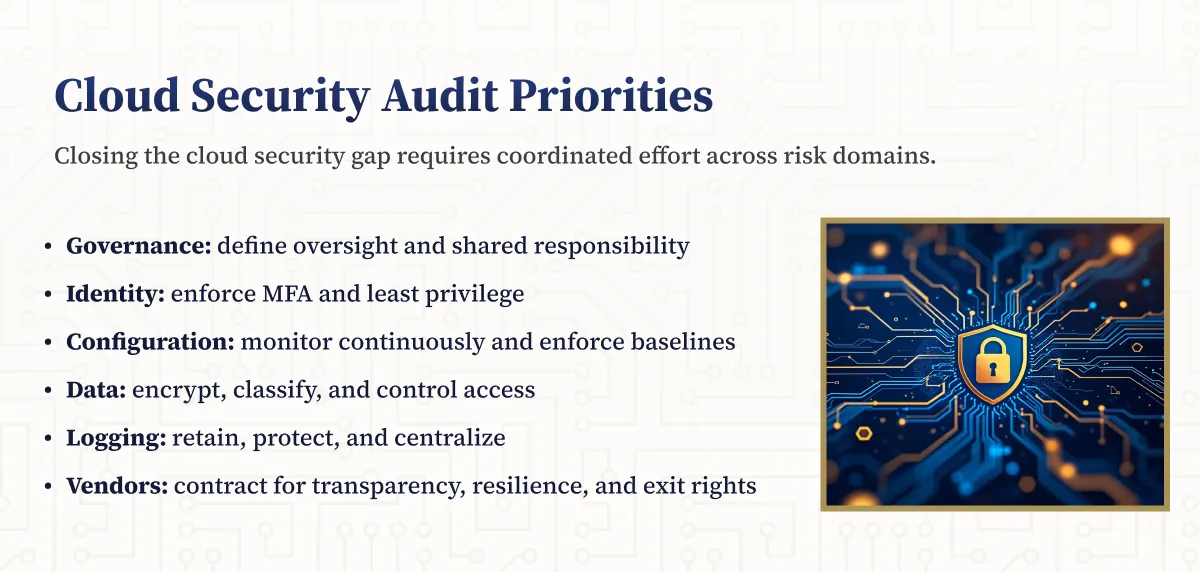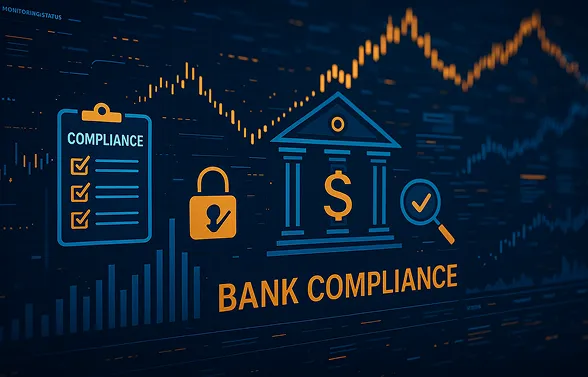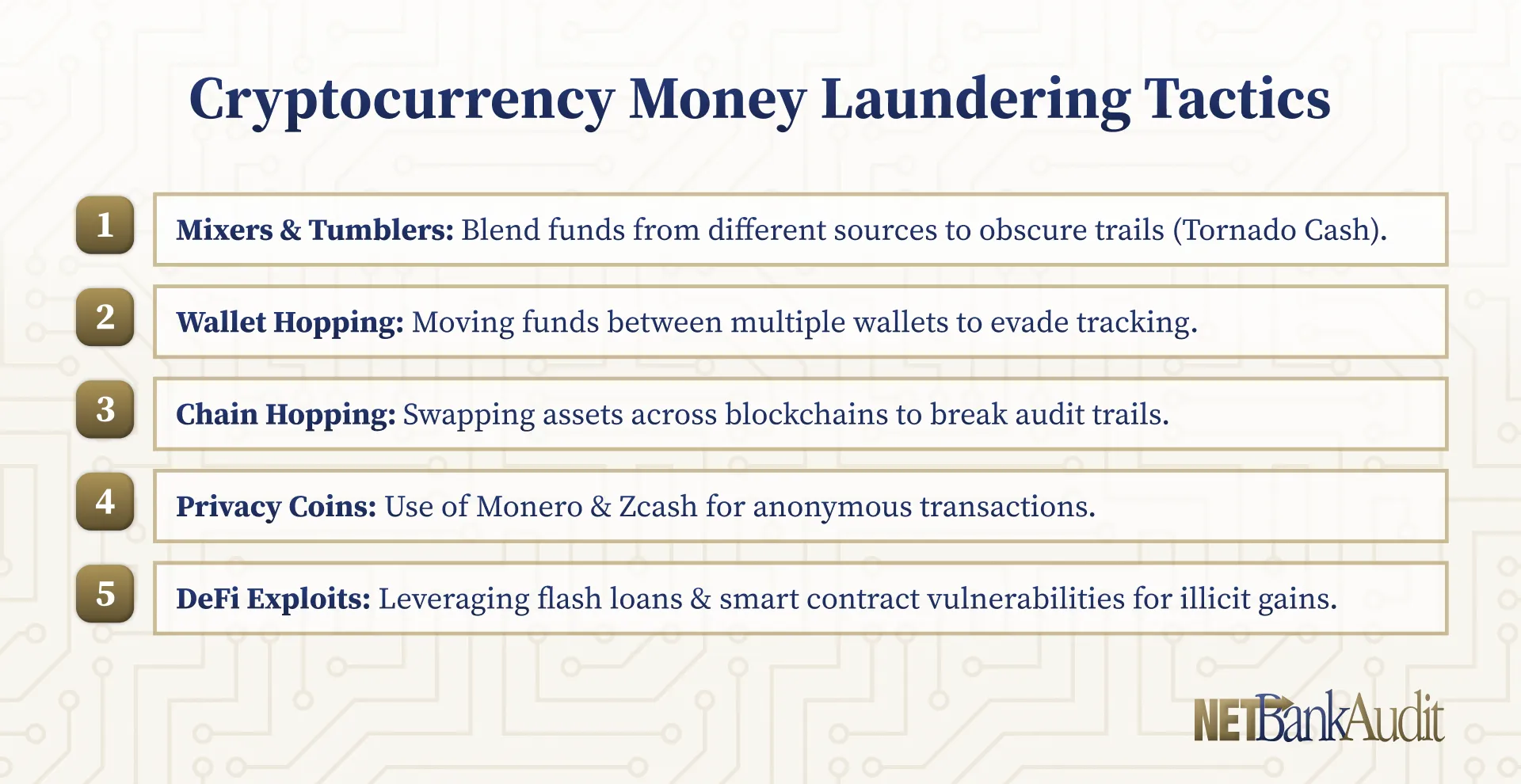Currency Transaction Reports (CTRs) serve as critical tools in the fight against money laundering, terrorist financing, and other financial crimes. Financial institutions face increasing pressure to maintain robust CTR compliance programs amid evolving regulatory expectations and sophisticated criminal methods. Institutions that fail to implement effective CTR processes risk substantial penalties, reputational damage, and exploitation by bad actors seeking to move illicit funds.
The Critical Role of Currency Transaction Reporting
CTRs provide essential intelligence to law enforcement and regulatory agencies monitoring for patterns of suspicious financial activity. Large cash transactions often indicate potential money laundering, structuring, or other illicit activities that threaten financial system integrity.
The Financial Crimes Enforcement Network (FinCEN) relies on CTRs as fundamental building blocks for financial intelligence. In 2022 alone, financial institutions filed over 16 million CTRs, creating a vast data repository that helps authorities identify criminal networks and track illicit fund movements.
Real-World CTR Enforcement Actions
With penalties for CTR violations reaching into the millions of dollars, compliance has become both a regulatory necessity and a business imperative. Below are some examples of compliance fines.
Capital One (2021) - FinCEN imposed a $390 million penalty for willful BSA/AML violations that included failure to file thousands of CTRs for transactions processed through its Check Cashing Group. The bank failed to upgrade monitoring systems or increase compliance staff despite significant growth in high-risk cash business lines.
Trump Taj Mahal Casino (2015) - A $10 million penalty was assessed for persistent AML failures, including not filing required CTRs on large cash transactions. The casino had a history of violations dating back to 1998, demonstrating how recidivism leads to escalating penalties.
U.S. Bank (2018) - A $613 million combined penalty was imposed partly because the bank had configured its automated system to cap the number of SARs and CTRs that could be filed, artificially limiting reporting to stay within resource constraints.
These cases highlight regulatory expectations that institutions must invest adequately in compliance resources, particularly in high-risk areas, and never implement systems that artificially limit regulatory reporting.
Regulatory Framework and CTR Requirements
The Bank Secrecy Act (BSA) establishes the legal foundation for CTR filing requirements. Under this framework, financial institutions must report currency transactions above specified thresholds and maintain comprehensive transaction records.

BSA Requirements for CTR Filing
Financial institutions must file a CTR for each deposit, withdrawal, exchange, or other payment or transfer involving currency exceeding $10,000. The FFIEC BSA/AML Examination Manual emphasizes that institutions should:
- Implement systems to identify reportable transactions
- Collect required customer and transaction information
- File complete and accurate reports within mandated timeframes
- Maintain appropriate documentation and records
- Subject CTR processes to independent testing
FinCEN Regulations and Filing Processes
FinCEN regulations require electronic filing of CTRs using FinCEN Form 112 through the BSA E-Filing System. Key requirements include:
- Submission within 15 calendar days following the transaction
- Complete and accurate data in all mandatory fields
- Proper identification of transaction participants
- Accurate record maintenance and retention
Unlike SARs, CTRs are not subject to the same confidentiality restrictions. Financial institutions may inform customers that transactions exceeding $10,000 require CTR filing, and this transparency can help discourage structuring attempts. However, institutions should implement consistent disclosure practices and avoid discussing specific CTR filing details that could compromise investigations.
Understanding Reportable Transactions
CTR requirements apply specifically to physical currency transactions—coin and paper money of the United States or foreign countries:
Reportable Transactions:
- Cash deposits or withdrawals
- Currency exchanges (including foreign currency)
- Cash payments for negotiable instruments
- Cash transfers between accounts
Non-Reportable Transactions:
- Checks, drafts, and similar instruments
- Wire transfers and ACH transactions
- Credit and debit card transactions
Aggregation Rules and Structuring Prevention

A critical aspect of CTR compliance involves properly aggregating related transactions. Financial institutions must file a CTR when:
- A single currency transaction exceeds $10,000
- Multiple currency transactions by or on behalf of the same person total more than $10,000 in a single business day
- Transactions occur across different branches of the same institution
- Multiple individuals conduct transactions on behalf of the same entity exceeding the threshold
Institutions must remain vigilant for structuring—deliberately breaking transactions into smaller amounts to evade reporting requirements. Detected structuring attempts require filing a Suspicious Activity Report (SAR).
The CTR Process Lifecycle
Effective CTR compliance follows a structured process from initial transaction identification through filing and record retention.
1. Identifying Reportable Transactions
Financial institutions use several methods to identify reportable transactions:
- Automated Monitoring Systems - Technology that flags transactions exceeding thresholds
- Front-Line Detection - Staff trained to recognize large currency transactions
- Aggregation Tools - Systems that track and combine related transactions
- Customer Screening - Reviewing transaction patterns against customer profiles
Real-time transaction monitoring helps detect threshold-crossing transactions, while end-of-day processing identifies aggregated amounts requiring reporting.
2. Information Collection Requirements
When a reportable transaction is identified, institutions must gather specific information about the transaction and participants:
Person Conducting Transaction: Financial institutions must collect comprehensive identifying information including full legal name, date of birth, permanent address, Social Security Number or TIN, government-issued ID type and number, and occupation.
Transaction Details: Complete documentation of the transaction itself is required, including the exact date and amount, transaction type, foreign currency information if applicable, and all account numbers involved.
Entity on Whose Behalf Transaction is Conducted: When applicable, institutions must document the legal name of the entity, its EIN/TIN, business address, and nature of business.
Verification Requirements: Financial institutions must verify the identity of transactors using documentary methods (government-issued photo ID) or non-documentary methods for existing customers. Multiple identification forms may be required for large transactions.
3. Filing Procedures and Timelines
CTR filing follows strict procedures:
- Complete FinCEN Form 112 with all required information
- Submit electronically through the BSA E-Filing System
- File within 15 calendar days of the transaction date
- Maintain copies of filed CTRs and supporting documentation
Most institutions use automated systems integrated with core banking platforms to streamline filing and reduce manual errors.
4. Record Retention and Documentation
BSA regulations require financial institutions to maintain:
- Copies of filed CTRs for at least 5 years
- Supporting documentation for reported transactions
- Evidence of filing timeliness and accuracy
- Records of transaction monitoring and aggregation
Developing Effective CTR Policies and Procedures
Strong policies and procedures form the foundation of an effective CTR compliance program. These written standards should detail all aspects of the CTR process, from identification through filing and record retention.
Essential Policy Components
A comprehensive CTR policy should include:
- Clear Definitions of reportable transactions and exemptions
- Detailed Procedures for identifying, documenting, and reporting transactions
- Specific Roles and Responsibilities for staff at all levels
- Quality Control Processes to ensure accurate and timely filings
- Documentation Standards for transaction records and verification
- Training Requirements for relevant personnel
- Integration with AML Functions including suspicious activity reporting
- Independent Testing protocols
These policies should be board-approved and regularly reviewed to ensure alignment with current regulatory requirements.
Staffing and Expertise
Effective CTR compliance requires appropriate staffing with clearly defined responsibilities:
Front-Line Staff must be trained to:
- Identify reportable transactions
- Collect required customer information
- Recognize potential structuring attempts
- Escalate concerns to compliance personnel
Compliance Team Members should be skilled in:
- Interpreting complex aggregation rules
- Reviewing transaction patterns
- Completing accurate CTR filings
- Understanding exemption criteria
Management and Oversight Personnel are responsible for:
- Program governance and resource allocation
- Review of challenging cases
- Coordination with regulators
- Approval of policy changes
System Capabilities and Data Management
Modern CTR compliance relies heavily on technology systems that can:
- Identify Reportable Transactions - Flag individual transactions exceeding thresholds
- Aggregate Related Transactions - Link multiple transactions by or on behalf of the same person
- Manage Customer Information - Store and retrieve required identification data
- Generate and File Reports - Create and submit FinCEN Form 112 electronically
- Maintain Records - Store supporting documentation and filing confirmations
System capabilities should align with the institution's transaction volume, customer base, and risk profile.
Exemptions from CTR Filing Requirements
FinCEN regulations allow financial institutions to exempt certain customers from CTR filing requirements, potentially reducing regulatory burden while maintaining compliance.
Types of Exempt Persons
CTR exemptions fall into two primary categories:
Phase I Exempt Persons
These entities qualify for exemption with minimal documentation:
- Banks operating in the United States
- Federal, state, or local government agencies
- Companies listed on major U.S. stock exchanges
- Subsidiaries of listed companies (at least 51% owned)
Phase II Exempt Persons
These customers require more extensive documentation and annual reviews:
- Non-listed businesses with frequent currency transactions
- Payroll customers who regularly withdraw large amounts of currency
Exemption Process and Documentation
To properly exempt a customer, financial institutions must:
- Verify Eligibility - Confirm the customer meets all criteria
- File Initial Designation - Submit FinCEN Form 110
- Maintain Documentation - Retain evidence supporting the exemption
- Conduct Annual Reviews - For Phase II exempt persons
- File Biennial Renewals - Submit updated Form 110 every two years for Phase II exemptions
Many institutions limit exemption use due to administrative complexity and regulatory risk.
Limitations and Ineligible Businesses
Several important limitations apply to CTR exemptions:
- Ineligible Businesses - Money services businesses, dealers in precious metals/stones, gambling establishments, and certain other high-risk businesses cannot be exempted
- Suspicious Activity - Exemptions do not apply if transactions appear suspicious
- Foreign Transactions - Exemptions generally do not cover foreign currency transactions
- Limited Coverage - Only covers the specific business relationship with the exempting institution
%201%20(1).svg)
%201.svg)
THE GOLD STANDARD INCybersecurity and Regulatory Compliance
Managing CTR Compliance Challenges

Financial institutions face several common challenges in maintaining effective CTR compliance:
Detecting and Preventing Structuring
Structuring—deliberately breaking transactions into smaller amounts to avoid CTR filing—remains a significant challenge. Effective detection requires:
- Pattern Recognition - Identifying unusual transaction sequences
- Customer Profiling - Understanding normal activity levels
- Staff Awareness - Training employees to recognize structuring attempts
- System Alerts - Configuring monitoring tools to flag potential structuring
When structuring is suspected, institutions must file both a CTR (if applicable) and a Suspicious Activity Report.
Common Pitfalls and Compliance Failures
Regulatory examinations frequently identify several common CTR compliance failures:
- Late Filings - Not submitting CTRs within the required 15-day window
- Incomplete Information - Missing or inaccurate data in required fields
- Aggregation Errors - Failing to properly link related transactions
- Exemption Misapplication - Improperly designating exempt customers
- Inadequate Documentation - Insufficient records of transactions or verification
- System Limitations - Technology that cannot properly identify or aggregate transactions
Penalties for Non-Compliance
The consequences of CTR violations can be severe and multi-faceted:
- Civil Money Penalties - Fines can reach millions of dollars, as demonstrated by Capital One's $390 million penalty in 2021 for widespread CTR violations
- Cease-and-Desist Orders - Regulatory actions requiring immediate correction of deficiencies
- Criminal Charges - In cases of willful violations, penalties can include imprisonment for up to 5 years under 31 USC §5322
- Reputational Damage - Public enforcement actions can severely impact customer and investor confidence
- Remediation Costs - Institutions often must conduct expensive lookback projects to identify and file previously missed CTRs
OFAC Overlap Considerations
While separate regulatory frameworks, CTR compliance often intersects with OFAC sanctions screening:
- Integrated Screening Process - Many institutions combine large cash transaction monitoring with OFAC screening to identify potentially sanctioned parties
- Shared Risk Indicators - Large cash transactions may trigger both CTR filing and enhanced OFAC due diligence
- Coordinated Compliance Functions - Efficient compliance programs often integrate CTR, SAR, and OFAC monitoring to provide comprehensive coverage
- Combined Staff Training - Front-line employees should be trained to recognize both CTR requirements and potential sanctions concerns
Technology Solutions for CTR Compliance

Modern technology offers significant advantages for CTR compliance:
Automated Monitoring Tools can:
- Track transactions across multiple channels and locations
- Apply complex aggregation rules consistently
- Generate alerts for transactions approaching thresholds
- Create audit trails of monitoring activities
Integrated Filing Systems help:
- Prepopulate CTR forms with existing customer information
- Validate data completeness before submission
- Track filing deadlines and send reminders
- Maintain electronic records of filings
Advanced Analytics and AI Applications enable:
- Pattern detection to identify potential structuring across accounts and time periods
- Machine learning models that adapt to evolving structuring techniques
- Predictive analytics to identify suspicious patterns before threshold breaches
- Risk scoring of customers based on transaction behavior and history
CTR/SAR Integration for Enhanced Monitoring
Many financial institutions benefit from integrating CTR processes with suspicious activity monitoring:
- Linked Workflows - When multiple CTRs are filed on a customer, the system automatically triggers enhanced review
- Holistic View - Compliance staff can see both CTR and suspicious activity data in a unified dashboard
- Shared Data Analysis - Patterns identified through CTR filing inform SAR monitoring strategies
- Coordinated Investigation - Transaction details captured for CTRs can provide valuable evidence for SAR investigations
Geographic Targeting Orders (GTOs)
Financial institutions should be aware that FinCEN sometimes issues Geographic Targeting Orders that temporarily lower reporting thresholds in specific regions or for particular transaction types:
- GTOs may require reporting cash transactions as low as $3,000 in designated high-risk areas
- These orders are typically time-limited and targeted at specific money laundering concerns
- Institutions operating in affected regions must adjust their monitoring systems to comply
- GTO compliance may require special procedures distinct from standard CTR processes
Training and Culture of Compliance
Successful CTR compliance depends on well-trained staff operating within a strong culture of compliance.
Employee Training Program
Comprehensive training ensures that all employees understand their CTR responsibilities:
- Role-Based Training - Tailored to specific job functions
- Regulatory Knowledge - Covering BSA requirements and filing obligations
- Red Flag Recognition - Teaching employees to identify structuring or suspicious behavior
- Procedural Training - Explaining internal processes
- System Usage - Demonstrating proper use of monitoring and reporting tools
Training should be provided at onboarding and refreshed regularly to address regulatory changes.
Management Oversight and Accountability
Effective governance requires clear accountability and ongoing oversight:
- Board Involvement - Setting the tone for compliance and allocating resources
- Management Reporting - Regular updates on filing volumes and compliance issues
- Performance Metrics - Tracking key indicators like filing timeliness and accuracy
- Issue Management - Promptly addressing identified weaknesses
- Regulatory Engagement - Maintaining communication with examiners
Senior leadership must demonstrate commitment to compliance through both words and actions.
Future Developments in CTR Reporting
The CTR framework continues to evolve as industry stakeholders and regulators discuss ways to balance compliance burden with the need for effective financial intelligence.
Regulatory Change Considerations
Several potential changes have been discussed in regulatory circles, though it's important to note that none have been officially adopted or implemented:
Threshold Adjustment Discussions
The $10,000 reporting threshold established in 1972 has remained unchanged despite decades of inflation. A recent GAO report discusses that if adjusted for inflation, the equivalent threshold would be approximately $72,880 in 2023. The report suggests this theoretical adjustment could reduce annual filings by up to 90% while potentially preserving critical data for law enforcement.
The Anti-Money Laundering Act of 2020 (AMLA) specifically mandates that the Treasury Department review the CTR threshold and consider adjustments. This review must be completed by the end of 2025, according to the law. However, no official plans to change this threshold have been announced by FinCEN, and the $10,000 threshold remains in effect until any regulatory change is implemented.
Streamlining Reporting Fields
Industry discussions have noted that certain CTR data fields might provide limited investigative value despite adding compliance burden. The GAO report indicates fields such as gender and certain industry codes are reportedly used less frequently by law enforcement. However, all currently required fields remain mandatory, and institutions must continue to complete all sections of FinCEN Form 112 in accordance with existing regulations.
Aggregation Rule Clarification
Financial institutions have expressed challenges with implementing complex aggregation requirements, sometimes leading to inconsistent application. While some industry groups have advocated for clarification and standardization of these rules, the current regulatory requirements remain in force.
Exemption Framework Modernization
While over 60% of CTRs involve businesses, relatively few qualify for exemptions under current rules. Industry discussions have touched on the potential benefits of expanding exemptions to additional low-risk business categories, but the existing exemption framework continues to apply without modification.
Technology Advancements in Compliance
While regulatory requirements remain consistent, technology continues to advance how institutions approach CTR compliance:
Automation Advancements Financial institutions increasingly leverage automation to streamline CTR processes. Modern systems can identify reportable transactions, aggregate related activity, and populate filing forms with greater accuracy and efficiency than manual processes.
Data Analytics Applications Advanced analytics help institutions identify patterns that might indicate structuring or other suspicious behavior. These tools supplement, but don't replace, the regulatory requirement to monitor and report transactions exceeding the $10,000 threshold.
Integration with Overall BSA/AML Programs Many institutions are implementing holistic compliance platforms that connect CTR processes with other BSA requirements, including suspicious activity reporting, customer due diligence, and beneficial ownership tracking. This integrated approach can improve efficiency while maintaining regulatory compliance.
Artificial Intelligence Implementation Some larger institutions are implementing AI and machine learning models that can:
- Analyze transaction patterns across accounts to detect sophisticated structuring schemes
- Predict which customers might be planning to structure transactions based on behavioral patterns
- Reduce false positives by distinguishing between legitimate cash-intensive businesses and suspicious activity
- Automate aspects of CTR narrative preparation for more consistent reporting
Financial institutions should monitor official FinCEN communications and guidance for any authorized changes to CTR requirements while continuing to fully comply with all current regulations.
Build an Effective CTR Compliance Program with NETBankAudit
In today's regulatory environment, effective CTR compliance requires a comprehensive approach that combines strong policies, appropriate technology, well-trained staff, and robust oversight.
Key Success Factors
The most effective CTR programs share several common characteristics:
- Risk-Based Approach: Aligning monitoring efforts with the institution's specific risk profile
- Process Efficiency: Streamlining identification, documentation, and filing procedures
- Technology Integration: Leveraging automated tools for consistent application of requirements
- Staff Expertise: Ensuring personnel understand regulatory requirements and internal processes
- Documentation Discipline: Maintaining comprehensive records of transactions, decisions, and filings
- Continuous Improvement: Regularly assessing and enhancing program elements
Strengthen Regulatory Compliance with NETBankAudit
As financial crime techniques continue to evolve, institutions must continually enhance their CTR capabilities within the current regulatory framework. This ongoing journey requires commitment, expertise, and adaptability to address changing circumstances and requirements.
Understanding how CTR compliance fits into the broader AML/CFT framework is essential. While separate from suspicious activity reporting and OFAC screening requirements, effective institutions recognize the interconnection between these compliance obligations and implement integrated approaches that address all requirements efficiently.
Financial institutions should:
- Stay informed about regulatory guidance and enforcement actions
- Participate in industry forums and discussions about potential CTR modernization
- Document compliance efforts thoroughly to demonstrate good faith efforts
- Ensure senior leadership understands the importance of CTR compliance and the severe consequences of violations
- Regularly test and validate CTR systems and processes
NETBankAudit offers comprehensive services to support financial institutions in strengthening their CTR compliance programs. Our experienced professionals can help assess current processes, develop enhanced policies, implement effective systems, train staff, and prepare for regulatory examinations.
Contact NETBankAudit today to learn how our tailored solutions can improve your Currency Transaction Reporting program, protecting your institution from regulatory penalties while contributing to the fight against financial crime.
.avif)

.svg)

.webp)

.webp)











.webp)



.webp)

%201.webp)
.webp)
%20(3).webp)


.webp)


%20Works.webp)


.webp)




.webp)
%20(1).webp)

.webp)










.webp)
.webp)

.webp)
.webp)
.webp)
.webp)
.webp)
.webp)
%201.svg)